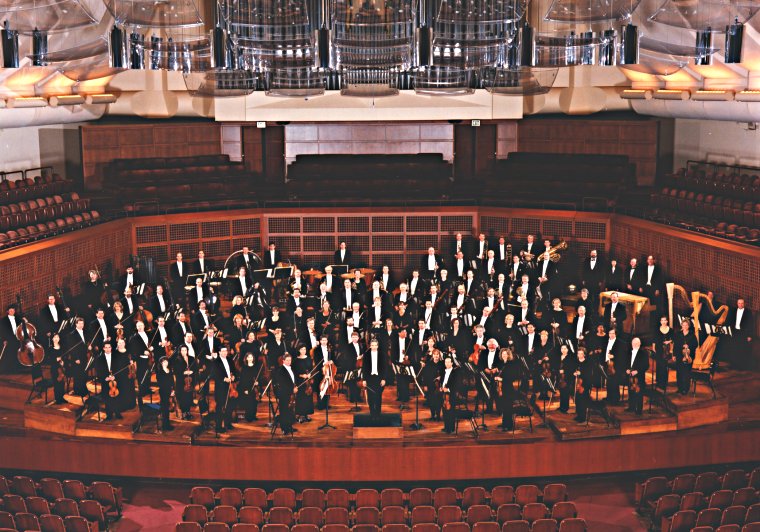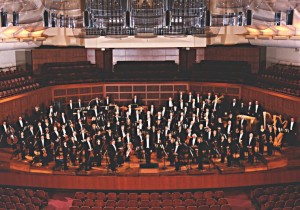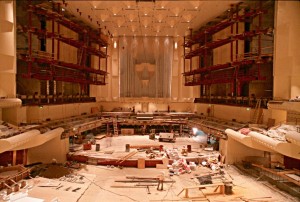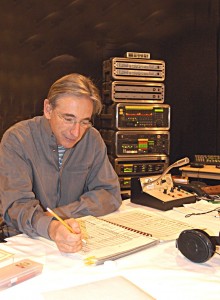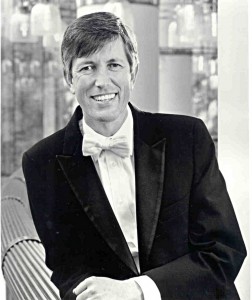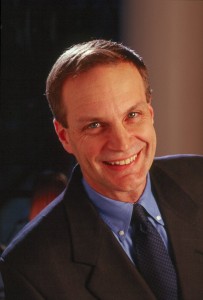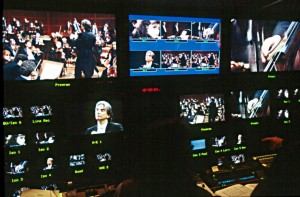San Francisco Symphony
The San Francisco Symphony (SFS) gave its first concerts in December 1911, and since then has developed a long and distinguished history marked by artistic excellence, dedication to community, educational initiatives, international tours, acclaimed recordings, and innovative programming for which the Orchestra has garnered numerous awards. Over the years, the SFS has grown in stature and acclaim under a succession of distinguished music directors: Henry Hadley (among the foremost American composers of his era), Alfred Hertz, Basil Cameron, Issay Dobrowen, the legendary Pierre Monteux, Enrique Jorda, Josef Krips, Seiji Ozawa, Edo de Waart, and Herbert Blomstedt (who, after a decade-long tenure that began in 1985, now serves as Conductor Laureate). The ensemble is currently led by Michael Tilson Thomas.
The orchestra performs in 2,743 seat Davies Symphony Hall which opened its doors to the public for the first time on September 16, 1980. The hall underwent a $10.25 million renovation (raised entirely through private funds) during the summer of 1992 and reopened later that fall on September 9th. Improvements included enhanced acoustical properties, updating the interior décor, providing improved facilities for the physically disabled.
The ensemble is comprised of 105 full time players, five conductors, a 217 member chorus of 187 volunteers and 30 professional singers, more than 80 board members, and 100 full time administrators. The organization also maintains a full youth ensemble, the San Francisco Symphony Youth Orchestra, which is in its 25th year of operation.
Michael Tilson Thomas assumed his post as the San Francisco Symphony’s 11th Music Director in September 1995, consolidating a strong relationship with the Orchestra that began some two decades earlier. It was January of 1974 when he made his San Francisco Symphony conducting debut at the age of 29, leading the Orchestra in Mahler’s Symphony No. 9. Tilson Thomas’s ten seasons as Music Director of the San Francisco Symphony have been praised by critics for innovative programming and for bringing the works of American composers to the fore, and have brought new audiences into Davies Symphony Hall. During his inaugural 1995-96 season, Tilson Thomas included an American work on nearly every one of his SFS programs, and ended the season with An American Festival, a ground-breaking two-week celebration of American music.
April 2006
Artistic Direction
Interview with Tom Hemphill, Orchestra Committee Chair
SFS percussionist Tom Hemphill currently serves as the elected chair for the ensemble’s Players Committee, the small group of musicians contractually obligated to represent the musicians in dealings with management and the board. Polyphonic.org Senior Editor & Research Principal, Drew McManus, spoke with Tom over the telephone about how the musicians will participate in the organization’s artistic future.
Although this conversation was with only with Tom, he received the first question in advance in order to have adequate time to consult with his fellow committee members regarding his answers.
Drew McManus: Now that the SFS has decidedly joined the ranks of the traditional “Big 5” ensembles, do the players have any ideas about where the artistic direction should go?
Tom Hemphill: For me, I see a number of challenges to players having a role in setting the artistic agenda of the SFS. Do we want to be the instigators or be asked to participate in initiatives? Do we sit down with the management and Board and mutually develop goals, and if we do, how are new initiatives implemented: within the CBA or outside it?
Drew McManus: What sort of experience do the players have with regard to working within the decision making apparatus?
Tom Hemphill: An example of how players view their place in the decision-making process can be seen in a recent meeting to discuss how the SFS could contribute to the Katrina Relief efforts. A number of musicians were frustrated by the absence of effort from the SFS and realized that the old model of waiting for the management to suggest an initiative was not getting the job done. Some thought we should have a rapid response team to respond to those in serious need. Underlying this discussion was a profound shift in the perceived role of orchestral musicians from one of performing exclusively on stage to one of looking for ways to connect deeply and meaningfully with the world community.
How does desire for connection influence the organization’s artistic agenda? The current structure provides little meaningful input from the musicians in directing the artistic future of the SFS. Not all musicians are interested in assuming an important role in directing our future, while others passionately desire to do so. Management is so busy running the organization that it is understandable they may be less than enthusiastic about bringing a whole new participant into the process. And how does the Music Director feel about all this?
Drew McManus: What factors are motivating the players to have these new sets of discussions?
Tom Hemphill: Desire on the part of the players to connect with the larger world is the reason players need to have a say in the artistic agenda. It won’t come easy and it probably won’t happen anytime soon. The discussion must happen and the organization will be a stronger and more successful one if the discussion starts now.
Interview with Brent Assink, Executive Director
Although the artistic direction of any ensemble is a task usually reserved for the music director, artistic staff, and musicians, there’s no denying that an orchestra’s chief administrator has a great deal of influence on how artistic programs are funded and implemented. In the case of the SFS, that man is Brent Assink, executive director.
Polyphonic.org Senior Editor & Research Principal, Drew McManus, spoke with Brent over the telephone about the organization’s future.
Drew McManus: Now that the SFS has decidedly joined the ranks of the traditional “Big 5” ensembles, what plans do you have to move the artistic direction forward?
Brent Assink: I say the artistic direction is to balance the old and the new, recognizing that the old will always be new to some and a fresh look invigorates everyone. A continual expansion of the repertoire for the audience and musicians is important; we want to be a catalyst for new work in the context of the highest level possible level of artistic achievement.
Drew McManus: What sort of programs in particular are you thinking about?
Brent Assink: I especially like the direction our community outreach programs are taking. They provide countless opportunities to a variety of levels of curiosity; such as dialog from the stage, extensive education programs for all ages, and full exploitation of TV, radio, internet, CD and DVD technology.
Drew McManus: As executive director, which programs are you enthusiastic about on a personal level to help reach those goals?
Brent Assink: Our multimedia effort, Keeping Score, is particularly exciting. Although the program is relatively new, we’re just starting to learn what the impact of that program is. For example, the initial PBS show and DVD reach out to underserved communities.
Another aspect of the program is the interaction with have with school teachers. In Fresno, we brought in 25 public school teachers provide them with the tools they’ll need to use the program in their class. They all had an opportunity to meet with Michael Tilson Thomas, the players, and our education staff.
It was tremendously exciting to see the results and hear from the teachers about how this gave them the confidence and tools to get their kids turned on to music. As a result of those efforts we have plans to extend the program to two more communities in the very near future.

